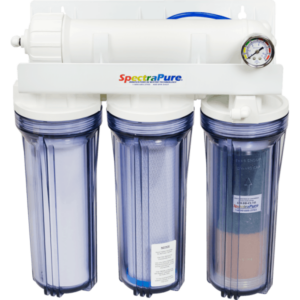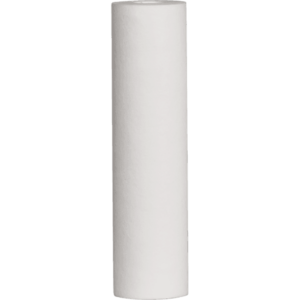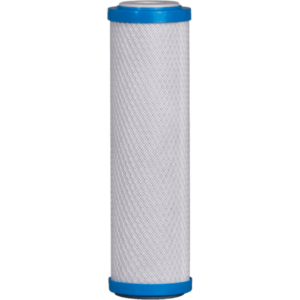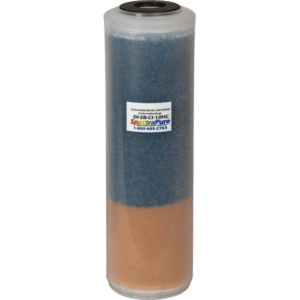Filtered Water via RO/DI
Filtered Water is another crucial part of growing medical grade Organic Cannabis.
There are so many impurities, chemicals and gunk in city tap water, that it really needs to be filtered to produced the highest quality medicine you can.
If you are on well or spring water and have a very low TDS (total dissolved solids) then you probably don’t need an RO/DI machine, but may require other types of filtration to remove odors or other issues your water may have. We highly suggest having your well or spring water tested to know exactly what is in it before using it to grow medical grade cannabis.
This article will only focus on residential RO/DI filters used primarily on city water.
RO/DI stands for Reverse Osmosis De-Ionization. It is the process of removing ALL impurities in your city water, bringing your TDS level down to ZERO!
TDS stands for Total Dissolved Solids and can range from 1 to well over 1000ppm (Parts Per Million) and measures the amount of solids within your water via EC Electrical Conductivity.
RO/DI units, like the one that are pictured above, are generally considered “residential” in their size & capacity & can do upwards of 200gpd depending on the unit you purchase. You can buy much larger & more expensive commercial units that will produce a much larger water volume, ranging in the thousands of gallons per day. But this particular piece will only focus on the smaller, more affordable residential units.
There are generally 4 main stages of RO/DI filters, but can have as many as 6-8, but really a 4 stage is all that is needed unless you need to target a very specific issue within your water.
On average, each of these RO/DI filters are capable of doing 10’s of thousands of gallons and last around 6-12 before the filters need to be replaced. However, if you have a higher TDS, above 200 or other impurities your filters may need to be changed prior to that 6-8 month mark.
Stage 1: Sediment
Sediment Pre-Filters helps protect your RO/DI system from the damaging effects of sediment (dirt & debris) build up. The sediment in city or well water can clog faucets, damage appliances and even change the taste of your drinking water.
We recommend a 0.5 micron filter for an almost absolute micron rating.
– Graduated sediment removal
– Excellent for use in areas with extremely high sediment levels
– Consistent filtration even at high differential pressures
– 100% polypropylene construction
– Cartridge free of surfactants, binders and adhesives
Here is the difference between & new & used sediment filter, as you can see they pull out A LOT of dirt & debris during the 1st stage!
Stage 2: Carbon
Carbon filtering is a method of filtering that uses a bed of activated carbon to remove contaminants and impurities, using chemical adsorption.
Each particle/granule of carbon provides a large surface area/pore structure, allowing contaminants the maximum possible exposure to the active sites within the filter media. One pound (454 g) of activated carbon contains a surface area of approximately 100 acres (40 Hectares).
Activated carbon works via a process called adsorption, whereby pollutant molecules in the fluid to be treated are trapped inside the pore structure of the carbon substrate. Carbon filtering is commonly used for water purification, in air purifiers and industrial gas processing, for example the removal of siloxanes and hydrogen sulfide from biogas.
We recommend a 0.5 micron size for your carbon filters so that it has the highest adsorption rate possible.
– Removes chlorine, organics, taste and odor
– Meet NSF Standards.
– 0.5uM carbon block filters remove trihalomethanes, low levels of chloramine, pesticides, volatile organic chemicals (VOC’s) and 99.95% of giardia and cryptosporidium cysts.
Stage 3: Reverse Osmosis
Reverse osmosis (RO) is the true workhorse of an RO/DI system and removes the majority of impurites out of your water a water purification technology that uses a semipermeable membrane to remove ions, molecules, and larger particles from drinking water. In reverse osmosis, an applied pressure is used to overcome osmotic pressure, a colligative property, that is driven by chemical potential differences of the solvent, a thermodynamic parameter. Reverse osmosis can remove many types of dissolved and suspended species from water, including bacteria, and is used in both industrial processes and the production of potable water.
After the RO membrane your TDS should be between 10-30ppm. To get it to 0 the 4th stage of De-Ionization is required.
Stage 4: De-Ionization
De-Ionized water (DI) is water that has had almost all of its mineral ions removed, such as cations like sodium, calcium, iron, and copper, and anions such as chloride and sulfate. De-Ionization is a chemical process that uses specially manufactured ion-exchange resins, which exchange hydrogen and hydroxide ions for dissolved minerals, and then recombine to form water. Because most non-particulate water impurities are dissolved salts, De-Ionization produces a high purity water that is generally similar to distilled water, and this process is quick and without scale build up.
A DI filter will bring your TDS levels down to 0 ppms!
If you follow this rule of always running RO/DI water you will produce some of the highest grade medical cannabis possible!







